Push notifications are the hidden gems, the unspoken allure poised to catapult your app’s engagement to new heights, while maintaining a captivating hold on your users.
And guess what?
There are different types of push notifications, each with its own special way of drawing attention.
Believe it or not, the typical smartphone user has about 40 apps downloaded on their phone.
Just picture yourself as a marketer or growth manager. It’s a seriously competitive arena. You’ve got to put on your thinking cap and pull out all the stops to make sure your app outshines the competition.
If you play your cards right and hit the sweet spot of timeliness and relevance, push notifications can pretty much work magic for your business.
What are Push Notifications?
Push notifications, or types of clickable pop-up messages, show up on your user’s browsers or mobiles regardless of the type of device or browser they use. These handy notifications act as an immediate communication link that lets companies send messages, deals, or other info to their customers.
And guess what?
Your subscribers can be anywhere on the browser and will still get these messages, provided they’re online or have their browsers open on their devices.
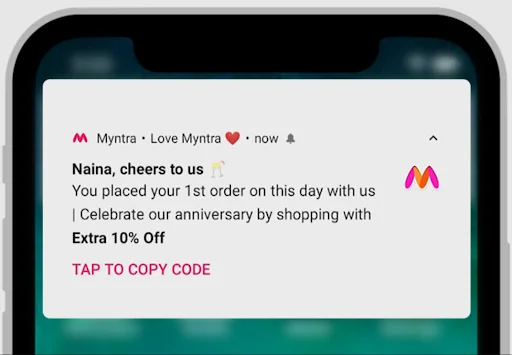
The Anatomy of a Push Notifications
Push notifications are a blend of several elements.
Typically, they include a title, a message, an image, and a URL. When creating a push notification, select an image that brings context, and use emojis to express your message concisely.
Here’s a snapshot of what comprises a push notification:
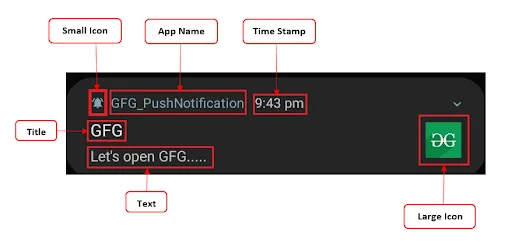
Write a catchy title and keep your copy within the suggested character limit. Add images or emojis to say more with less, provide the correct URL and CTA, then press send. Your first type of push notification will be en route to your subscribers.
Push notifications are simple and engaging messages that are easy to react to. This makes them a powerful tool for businesses to keep their audience involved, even when they’re not active on the site.
Decoding the Opt-in Message and Its Importance
The opt-in message is the inaugural notification you send to your potential subscribers. This message plays a crucial role in turning a visitor into a subscriber. Therefore, it’s key to communicate the value your push notifications bring.
Once you enable push notifications on your website or app, your visitors will start seeing a small opt-in box on their browsers. This box inquires if they’re interested in receiving notifications from your site.
The moment they give their consent, they’re enlisted as subscribers in your subscriber base, and you can begin sending out various types of push notifications to keep them engaged and encourage them to revisit your website for more offers and activities.
Tailor the opt-in message to add more context to your chat. Depending on what your business is about and who your target audience is, plan the timing of your opt-in message accordingly.
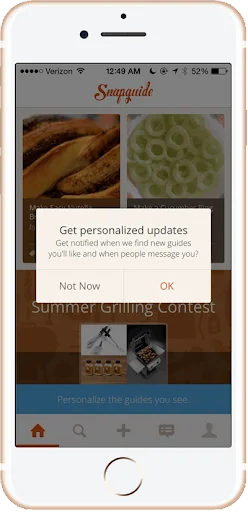
Choose whether you want the permission message to pop up as soon as visitors land on your site or after they’ve engaged with your site for a certain period. Be sure to make it clear that opting out is a straightforward process, as this will help to cultivate trust in your brand.
Also read: Push notification opt-ins on Android 13
The importance of push notifications
Push notifications serve as a crucial tool for maintaining user engagement, acting as a direct, personal line of communication to your audience. Here’s the value they provide
1. Freedom to Choose
So, you know what’s great about push notifications?
They put the power right in the hands of your users. Users get to choose if they want to hear from you or not with a simple click on ‘allow’. Just make sure your opt-in message tells them what they’re signing up for. No one likes surprises, right?
So, if they know what to expect, they’re more likely to stick around and you get more value from your push notifications.
2. Quality Leads
We all know the pain of trying to get good leads.
It’s like trying to pull a rabbit out of a hat!
But with different types of push notifications, you don’t need to perform magic. No personal info required, just a single click and you’ve got a subscriber.
Plus, it’s opt-in, which means your messages land straight in an active browser of real subscribers.
And guess what?
Almost everyone uses browsers like Chrome, Safari, or Firefox. So, your reach? It’s practically the entire internet!
3. Bring them Back
Okay, you got a customer to your site once. But how do you get them to come back?
Well, with push notifications, you’ve got the hook to reel them back in.
Send them a clickable message that takes them straight to your site. This is your chance to get creative with your notifications and personalized messages to keep them coming back for more.
What’s better is that push notifications have a 4x higher click-through rate than emails.
4. Save Time
If you’re in marketing, you know how much time it takes to whip up a newsletter or email.
It’s like baking a cake from scratch.
But with push notifications, it’s more like microwaving a ready meal. They’re quick, snappy, and take way less time to put together.
But don’t forget, the title still needs to pack a punch and the message needs to hit home.
5. Timely Connections
One of the best things about different types of push notifications? They’re like your personal assistant, reminding your users about you at just the right time.
You can send real-time notifications for immediate responses, set expiry dates for time-bound messages, and even schedule them based on where in the world your users are.
6. Improve Outreach
Push notifications are like your best friend in the digital world.
They’re way more reliable than SMS and email, since they don’t have to fight their way out of spam folders or get lost in the crowd of unread messages. They pop right up on your users’ screens, saying “Hey! Look at me!”
7. Mobile Apps are Not the Only Medium
With push notifications, you can reach your mobile audience without having to build an expensive app. Users can receive notifications just like in-app ones, right on their Android device. All they need is a device that supports Chrome, Firefox, or Opera browser.
Exploring the Different Types of Push Notifications
Let’s dive into the four major types of push notifications – Web push notifications, Desktop push notifications, Mobile app push notifications, and push notifications for wearables. Here’s the lowdown on each:
1. Web Push Notification
Imagine getting messages straight to your desktop web or mobile web; that’s exactly what web push notifications are.
These alert messages slide in at the top or bottom right-hand side of your desktop screen or pop up on your mobile, almost like an app notification.
They help increase website engagement and bring visitors back to their site, boosting conversions. Plus, setting up web push notifications for your website is a piece of cake, making them an incredibly useful tool for marketers.
The catch is you can receive web push notifications anytime you’re active on your browser, whether you’re on the relevant website or not.
An Example Of Web Push Notification

2. Desktop Push Notifications
Unlike their web counterparts, desktop push notifications are exclusive to your users’ desktops.
Triggered by the products installed on your desktop, these notifications aim to drive customer engagement. However, building desktop push notifications can be a tad trickier than web push notifications and might require a developer’s assistance.
An Example Of Desktop Notifications
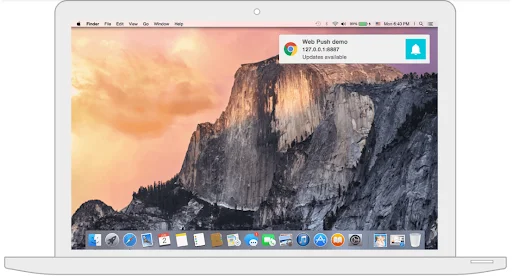
3. Mobile App Push Notifications
Much like desktop notifications, mobile app push notifications are initiated by an app on your device.
When a user launches the app, unique identifiers for both the app and the device are registered with the OS push notification service. These IDs are shared with the app publishers, who then craft and send push notifications with the aim of heightening customer engagement.
Your phone can display push notification alerts in three spots—lock screen, banner, and notification center when the app user opts in for messages.
Android users now require permission to opt-in and can manually opt out, while iOS does not allow apps to send notifications until users consent to receive messages. Much like their desktop counterpart, mobile app push notifications don’t require developer expertise to create with Netcore’s platform.
4. Push Notifications on Wearables
Our Smart Watches aren’t just for telling time anymore; they can now receive push notifications too.
These wearables are synced with smartphones, enabling them to display notifications straight from mobile apps. You can tailor notification settings on both mobile and wearables, choosing to receive notifications from some apps while disabling others.
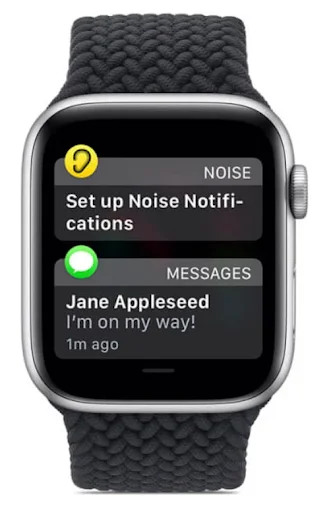
But remember, the screen size of wearables is smaller than smartphones, which means the type of push notification they display is shorter and punchier than mobile notifications.
The different types of push notification campaigns
1. Picture-Perfect Push Notifications:
In these “Rich push notifications,” you have more room to tell your story. You can include captivating images, fun emojis, and up to two calls to action.
This is where you can really stretch your creative muscles and make your notifications more interactive and visually appealing. For instance, you can use a tantalizing image of your product to draw users in or leverage emojis to express sentiment, grabbing attention with a single glance quickly.
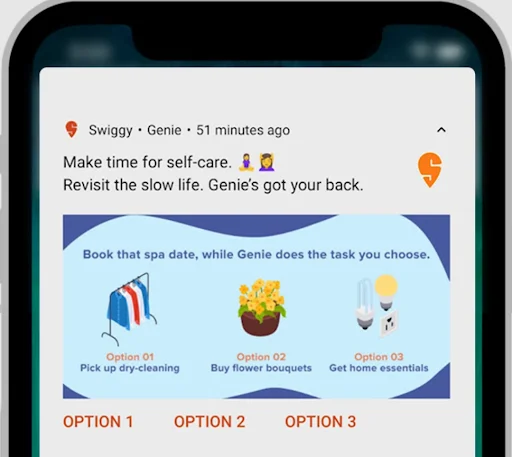
2. Abandoned cart push notifications:
They are your second chance at converting a potential customer. You can schedule automated reminders, urging customers to come back to items they’ve left in their carts.
Customize your notifications based on user data, like their previous shopping behavior or preferences. By using tailored language, you can appeal to their interests, enhancing the possibility of conversion.
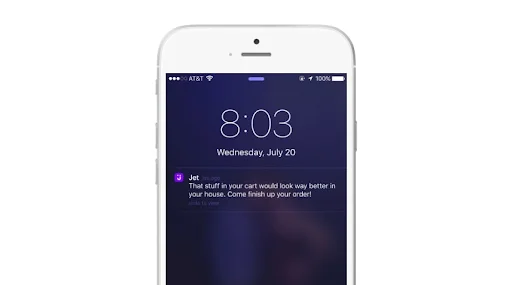
3. FYI Notifications:
With “For-your-information (FYI) notifications,” you can keep your users updated with relevant and interesting news. For instance, if you run a travel business, alert your users about exciting new travel destinations or special deals. These notifications help to maintain user engagement, ensuring your brand stays top-of-mind.
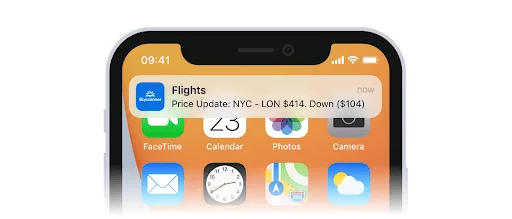
4. On-Demand Notifications:
“Triggered push notifications” are designed to accompany your user’s journey. This could be a welcome series for new subscribers, milestone acknowledgments, or responses to specific user actions. With this type of push notification, you can stay proactive and build a stronger bond with your users.
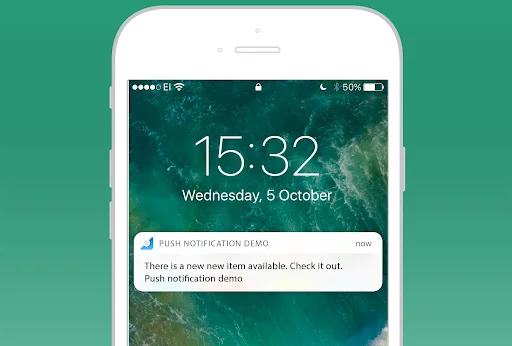
5. Nudge, Nudge:
“Reminder notifications” act like a helpful friend, nudging users to complete tasks.
For instance, an incomplete user profile on your platform or items left in their shopping cart. This type of push notification serves as a prompt to take action, potentially improving user engagement and conversion rates.
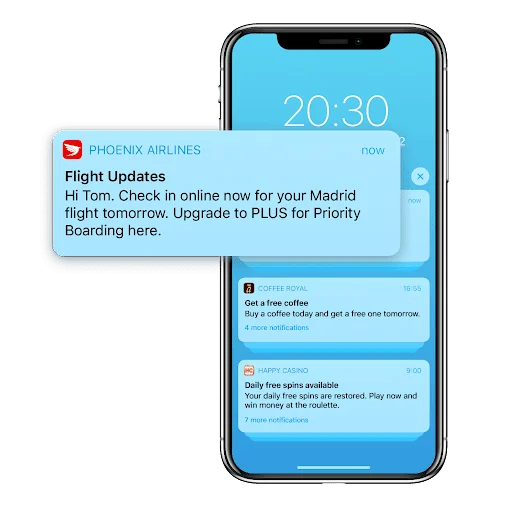
6. Location, Location, Location:
“Interest-Based Geo-location Notifications” are particularly useful when you have location-specific information to share. For example, for a dating app, you could send a notification about matches nearby.

Or, for a retail app, alert users about sales in local stores. This helps to increase the relevance of your notifications, making users more likely to engage.
7. Mobile Ready:
“Mobile-Friendly Push Notifications” help you reach users directly on their mobile browsers without them needing to download an app. This is especially handy given the rise of mobile usage, as it allows you to engage with your audience where they’re most likely to be.
8. Time-bound notifications:
These are perfect when you want to create a sense of urgency. This could be for a limited-time offer, an upcoming expiry date, or even a flash sale. By creating a sense of urgency, you can encourage users to act quickly and increase conversion rates.
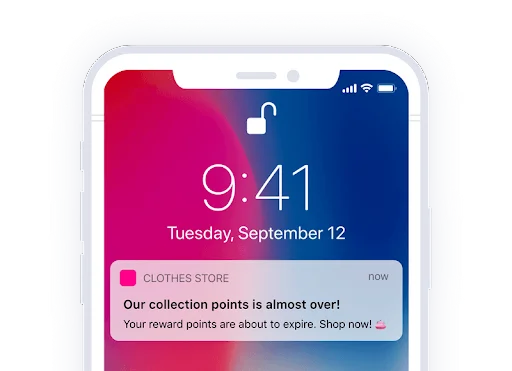
9. Keeping Track:
“Transactional push notifications” provide users with updates about their transactions. For instance, a notification about a successful order placement or an alert about an upcoming subscription renewal. This type of push notification helps to build trust and keep your users informed.
10. User-centric Alerts:
“User-based push notifications” can be highly effective, as they are permission-based and will only be sent to users who’ve opted in. By respecting user preferences, this type of notification helps to maintain a positive relationship with your audience while maximizing engagement.
What NOT to do with Push Notifications
Push notifications are like your best mate in the digital world. They’re always there, chatting with your audience and giving them the latest scoop in real-time, all while adding that personal touch.
And get this. A solid push notification campaign can actually bring folks back to your site or app and steer them toward your top content.
But hold your horses.
Despite their awesome potential, lots of websites miss out on the full benefits of the different types of push notifications because of some common and easily avoidable mistakes. Want to avoid these pitfalls? Check out this list:
1. Overdoing the Notifications:
Imagine being at a party where someone won’t stop talking. Annoying, right? That’s what it feels like when you flood your subscribers with push notifications.
It might seem great at first when you see a spike in your numbers. But keep this up, and more and more folks are going to hit that opt-out button.
Too few notifications, though, can have the opposite effect, with subscribers forgetting about you. So, finding the right balance is key when sending out different types of push notifications.
2. Forgetting to Automate:
You wouldn’t want a text from a brand at 3 AM, would you? The same goes for your push notifications.
If you don’t schedule them properly, your subscribers will get them at all sorts of odd hours, causing some serious friction. So, plan and automate your push notifications to make sure they get sent out at the best times for maximum engagement.
Remember, a well-timed push notification can put a smile on a user’s face, while a poorly timed one might just have them hitting that opt-out button.
And let’s not forget the advantages of scheduling:
- Be Everywhere: Got a big conference coming up? No worries! Schedule your push notifications in advance, and they’ll be delivered right on time while you’re busy rubbing elbows with industry leaders.
- Perfect Timing: Use scheduled notifications to build up excitement about a big sale or event and then to remind folks it’s ending soon. You’ll have them in a FOMO frenzy
- No More Unread Emails: With scheduled push notifications, you won’t have to worry about your promotional emails being left unread. You can even schedule them to match your subscribers’ time zones, so they’ll arrive when users are most active.
- Create a Buzz: Scheduling push notifications is a great way to promote an upcoming deal or product on your site. Not only will they grab attention right away, but they’ll also keep people coming back to see what’s new.
3. Forgetting the Onboarding Notifications:
Remember when you were new at school, and someone showed you around? That’s what onboarding push notifications are like for new subscribers. Use a series of notifications to guide them through your site and keep them engaged.
4. One Size Fits All? No Way!
Your audience isn’t all the same, so don’t treat them that way. Trying to blanket everyone with the same message will just lead to notification fatigue. Instead, segment your audience based on their interests and actions, and send personalized messages to each group.
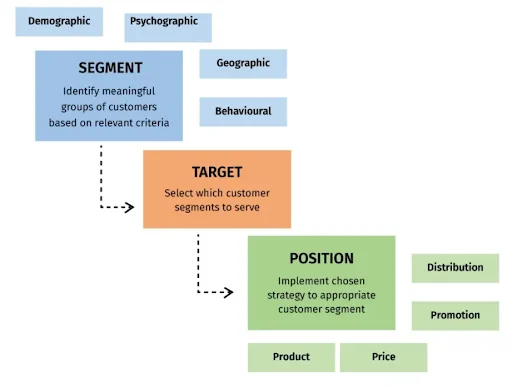
5. Not Keeping Track of the Right Metrics:
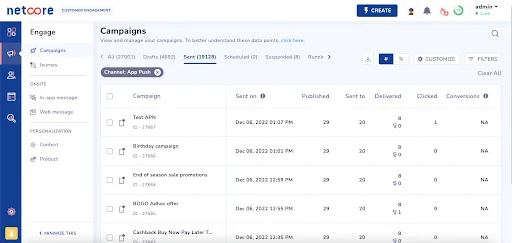
If you’re just looking at click rates, you’re not seeing the whole picture.
You also need to track conversions and the real value your push notifications are bringing in.
Dig into your analytics and see what actions users are taking on your site after they arrive via a push notification. Only then will you get a true picture of how effective your push notifications really are.
Remember, if you have a mobile app, use it in tandem with browser push notifications. And if you don’t have an app, don’t stress about building one just to send push notifications.
Your website’s browser can do that job just fine. In fact, for small and medium-sized businesses, mobile websites often reach more people than apps do.
Conclusion
Push notifications are like your digital courier, delivering direct messages right to your visitor’s browser. They stretch your online reach without you needing to break a sweat over capturing details with lead forms. Plus, with a simple one-click opt-in, connecting with your subscribers is a breeze. We hope these tips and stats help you whip up an effective push notification strategy, craft the perfect messages, and pick the right tool to make it all happen.
Are you pumped to see the true power of push notifications? Don’t wait any longer! Book a live demo and drive conversion with Netcore’s customer engagement platform and witness first-hand how this game-changing tool can totally transform your customer engagement strategies.











